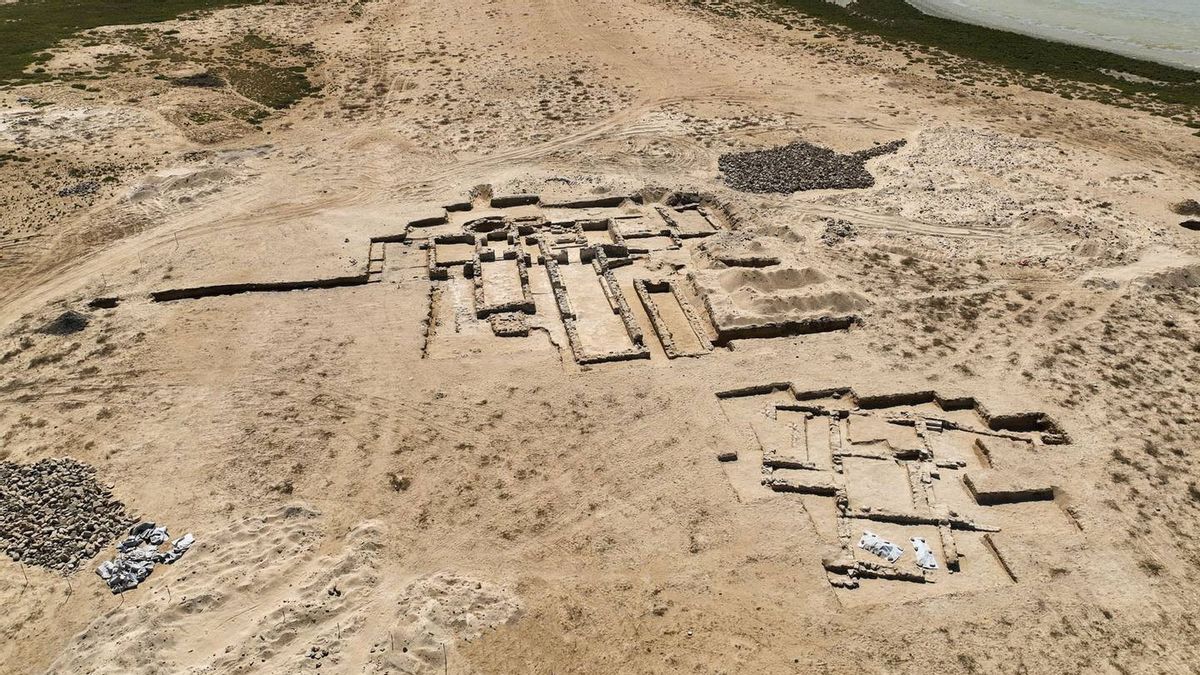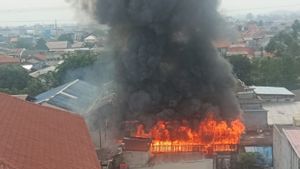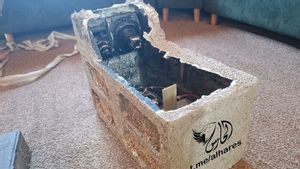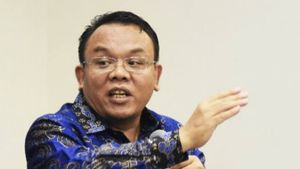JAKARTA - A number of archaeologists who were members of the research team managed to find an ancient Christian monasteries on Al Sinniyah Island, Umm Al Quwain, United Arab Emirates (UAE).
Announced the main discoveries on Thursday, the emirate's Department of Tourism and Archeology said the complex included a church, dining room, water tank and a place for monks where they spent time alone.
The dating of radiocarbons and the valuation of pottery excavated at the site showed the community was developing there between the end of the sixth century and the middle of the eighth century, meaning it could have been established in the pre-Islamic era.
The findings also highlight when Christians and Islam coexist, revealing more about the rapidly growing population of Christian Arabia in East Arabia.
Al Sinniyah, shaped like some fingers, is located between the UAQ peninsula and the Gulf coast, protecting the mangrove-irresisted Khor Al Beida lagoon.
Around its coast is evidence of thousands of years of human occupation.
This is the second monasteries found in the UAE, following the discovery of one on Sir Bani Yas Island in Abu Dhabi in the early 1990s.
Six ancient monasteries have so far been found along the coast of the Gulf of Arabia.
"This is a very rare discovery," said Prof. Tim Power of the University of the UAE, which is part of the team that excavated the monasteries.
"This is an important reminder of the missing chapter of Arab history," he continued.
The findings are part of the Sinniyah Archaeological Project, a collaboration between the UAQ Department of Tourism and Archeology; Institute of Ancient World Studies at New York University and the Italian Archaeological Mission at UAQ to study the area.
This is further supported by the Ministry of Culture and Youth of the UAE.
The first discoveries of monasteries were made last year, strengthening Al Sinniyah as one of the most important archaeological sites in the UAE.
The ruins found were in remote and uninhabited areas, but more than a thousand years ago people lived, traded and prayed on the island. The bicaras includes a group of buildings including kitchens, warehouses and tanks to collect drinking water and ovens for communicable bread. Close to the house of the head of the monasteries or the 'paricipal palace.'
The Monas were built from local coastal stones and walls and the floor was covered with a type of limestone plaster.
A large tank found near the platform has the potential to be used for cremation. It is believed they celebrate mass in a single hallway church, pray seven times a day, sing prayers and even sing praise songs.
Archaeologists also found an▁namaves and bowls allegedly used to mix wine.
"We also found large glass trophies. They are not a type of drink and are meant to deliver Ekaristi and for ceremonies," explained Prof Power.
He explained that monks in this region are known for their segregation practices and can be compared to the monastic community in Iona, Scotland's west coast of the sixth century.
Archaeologists say it's important to note, it wasn't built by visitors. It is considered a familiar Christian Arab building and is part of a local story.
After the rise of Islam, Prof. Power said there was a period of about 300 years where the two religions coexisted.
"The narrative of conquest with violence will not succeed. The place is slowly abandoned. There are no signs of destruction or violence or arson. There are increasing cultural and social changes, along with fading of criticism and Islam becoming dominant. This is a monument to tolerance and multi-religious society," he explained.
"Islam is not the first monotheistic community to come, but paves the way for the spread of Islam. The fact that there is a Christian Arabian population in East Arabia is somewhat overlooked. So this discovery is an important reminder of the chapter that has disappeared from Arabic history," he said.
Earlier this year excavations on the island proved Umm Al Quwain was at least 700 years old.
Two settlements were found, with the oldest believed to date back to the 13th or 14th centuries.
Previously, UAQ was thought to have grown around the fort founded by Sheikh Rasyid bin Majid Al Mualla in 1768.
Further excavation of monasteries is planned at the site for next year.
The English, Chinese, Japanese, Arabic, and French versions are automatically generated by the AI. So there may still be inaccuracies in translating, please always see Indonesian as our main language. (system supported by DigitalSiber.id)










